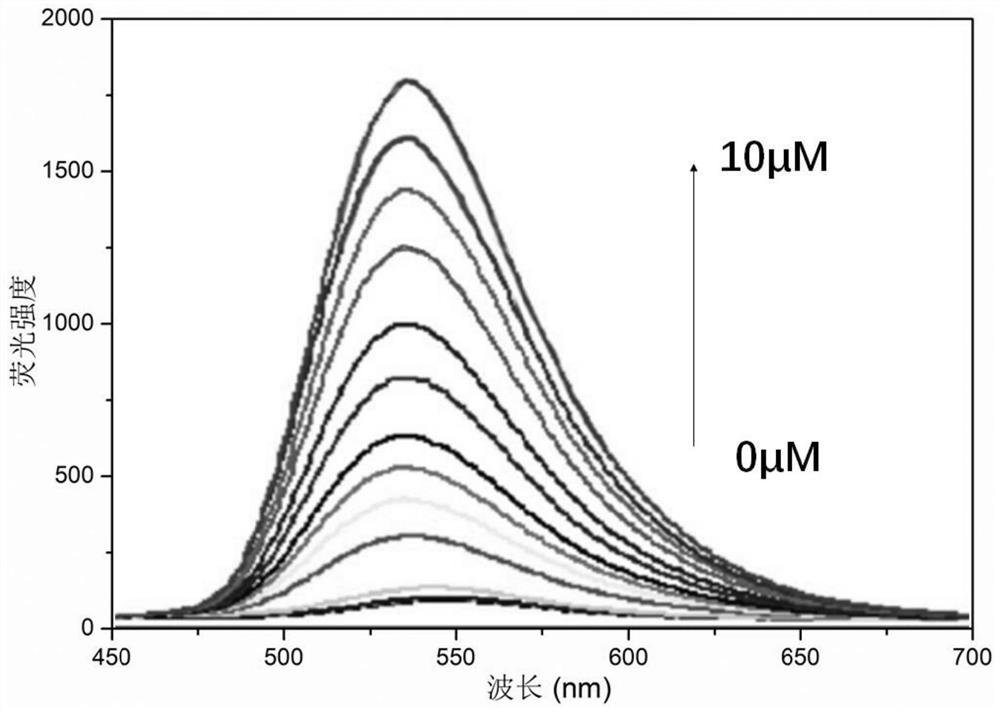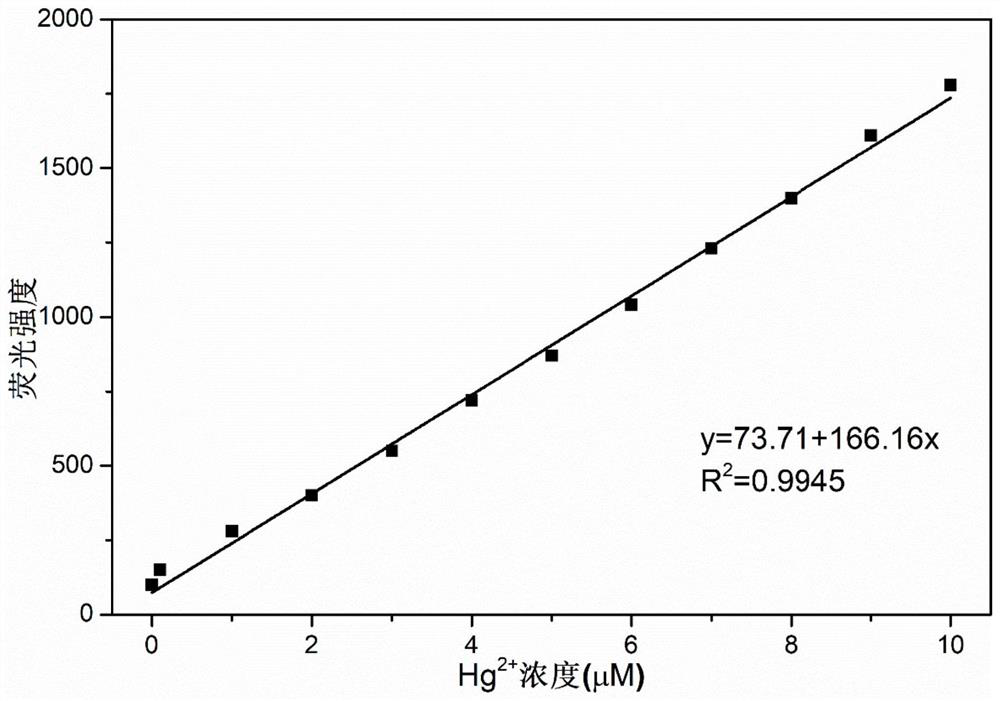Outdoor water source heavy metal detection polymer preparation and preparation method thereof
A heavy metal and polymer technology, applied in the field of heavy metal detection, can solve the problems of high raw material cost, limited application, difficult heavy metal ions, etc., and achieve the effect of increased fluorescence intensity, rich pore structure, and full adsorption
- Summary
- Abstract
- Description
- Claims
- Application Information
AI Technical Summary
Problems solved by technology
Method used
Image
Examples
preparation example Construction
[0031] The invention provides a method for preparing a polymer preparation for detecting heavy metals in outdoor water sources, comprising the following steps:
[0032] S1. Add a predetermined amount of borax and agar into the polyvinyl alcohol solution, heat and stir to obtain a first mixed solution; after the first mixed solution is cooled to room temperature, a composite hydrogel is obtained;
[0033] S2. After mixing 4-bromo-1,8-naphthalene dicarboxylic anhydride and piperazine according to a preset molar ratio, dissolve them in an organic solvent to perform a first reflux reaction to obtain a first reflux product; After mixing with ethanolamine according to the first preset mass ratio, dissolving in an organic solvent, adding a predetermined amount of triethylamine, and performing a second reflux reaction to obtain a carboxylated fluorescent product;
[0034]S3. Mix the composite hydrogel obtained in step S1 and the carboxylated fluorescent product obtained in step S2 acc...
Embodiment 1
[0046] This embodiment provides a method for preparing a polymer preparation for detecting heavy metals in outdoor water sources, including the following steps:
[0047] S1. Add polyvinyl alcohol into deionized water, stir fully at 90°C until the polyvinyl alcohol is completely dissolved, and obtain a polyvinyl alcohol solution with a mass fraction of 2%; then add a predetermined amount of borax and agar to the polyvinyl alcohol solution respectively In the process, the first mixed solution is obtained, and the mass ratio of polyvinyl alcohol, agar and borax in the mixed solution is 1:1:0.2; the mixed solution is continuously stirred, and after it is cooled to room temperature, a composite hydrogel is obtained.
[0048] S2. After mixing 4-bromo-1,8-naphthalene dicarboxylic anhydride and piperazine at a molar ratio of 1:1, dissolve in ethylene glycol monomethyl ether, reflux at 85°C for 6 hours, and then cool to room temperature. The product is subjected to suction filtration a...
Embodiment 2~3 and comparative example 1~2
[0057] Examples 2-3 and Comparative Examples 1-2 respectively provide a polymer preparation for detecting heavy metals in outdoor water sources. Compared with Example 1, the difference is that the amount of agar added in step S1 is changed. The mass ratios of polyvinyl alcohol and agar in Examples 2 to 3 were 1:0.8 and 1:1.2 respectively; in comparative example 1, no agar was added; in comparative example 2, the mass ratio of polyvinyl alcohol to agar was 2 :1. The remaining steps of Comparative Examples 1-2 are consistent with those of Example 1, and will not be repeated here.
[0058] In the same manner as in Example 1, the heavy metal detection polymer preparation prepared in Comparative Examples 1-2 was applied to the detection of mercury ion concentration, and its detection limit, coefficient of variation and relative deviation were tested and calculated. The results are shown in Table 1 shown.
[0059] Table 1 The detection situation of the heavy metal detection polyme...
PUM
 Login to View More
Login to View More Abstract
Description
Claims
Application Information
 Login to View More
Login to View More - Generate Ideas
- Intellectual Property
- Life Sciences
- Materials
- Tech Scout
- Unparalleled Data Quality
- Higher Quality Content
- 60% Fewer Hallucinations
Browse by: Latest US Patents, China's latest patents, Technical Efficacy Thesaurus, Application Domain, Technology Topic, Popular Technical Reports.
© 2025 PatSnap. All rights reserved.Legal|Privacy policy|Modern Slavery Act Transparency Statement|Sitemap|About US| Contact US: help@patsnap.com



